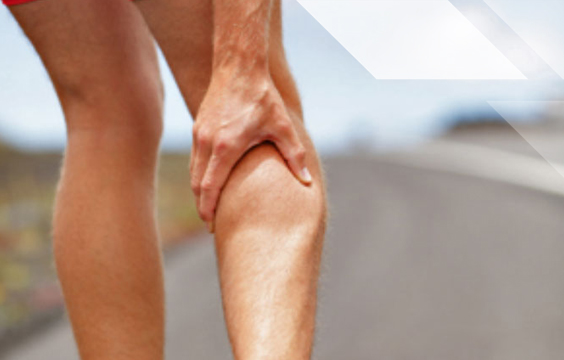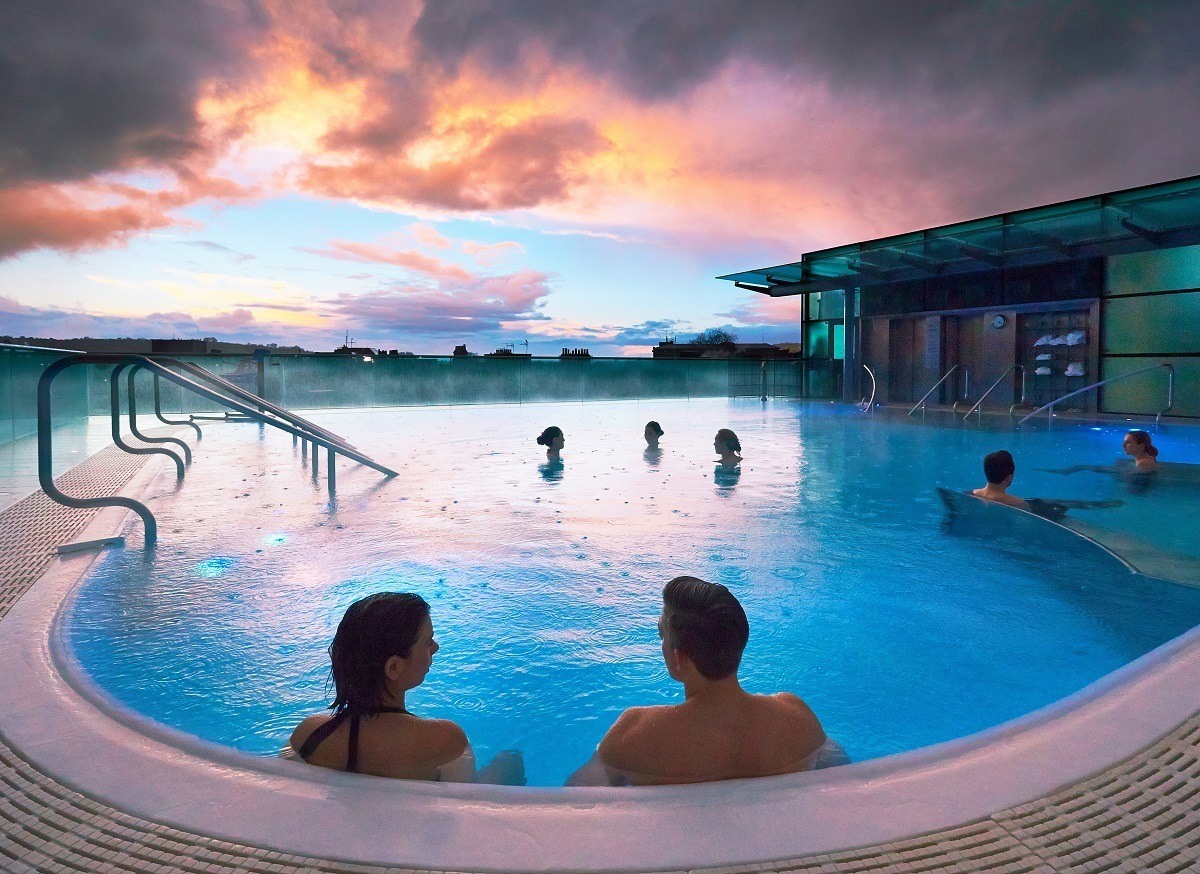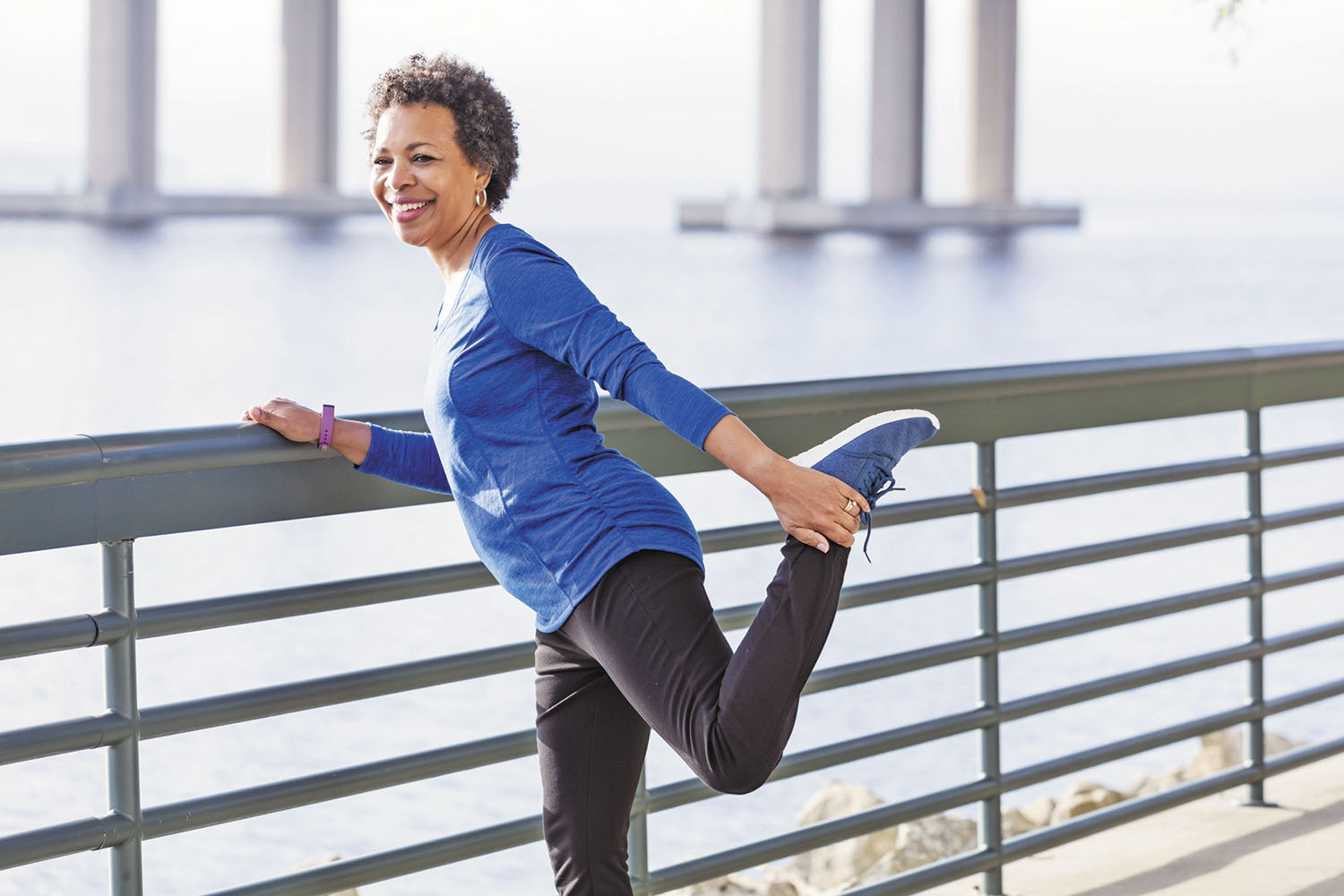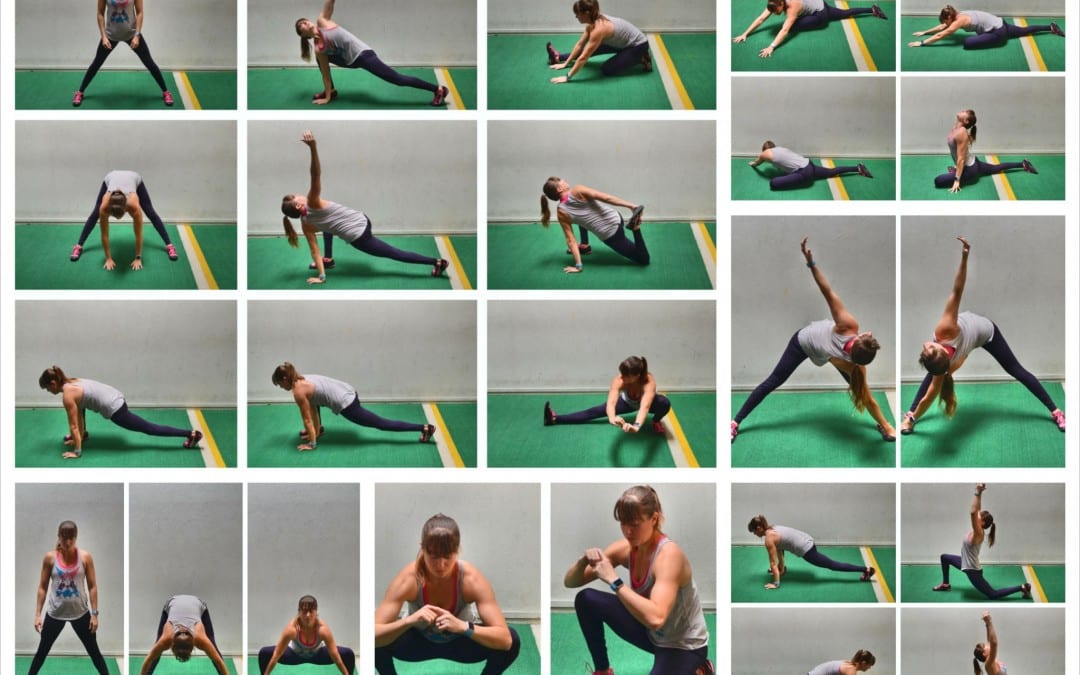
Cramping: How to stop it, why it happens
(Consider adding Magnesium to your electrolyte mix)
This week was the IMAZ race. IMAZ tends to have very cold water swims and I read several reports of DNF due to cramping on the swim this weekend. The science is unclear about why they happen but not unclear about what they are.
It got me to thinking about cramps and prevention. I used to have a lot of cramping on the swims in particular. If anyone touched my foot, my leg would immediately begin to cramp...not a good thing! On longer races, at about the last 400 yards when I wanted to amp up my finish speed, my legs would often cramp. I struggled my whole life with calf and hamstring (Charlie Horse) cramps. I'd wake up in the middle of the night with them, my leg and foot stuck in a permanently flexed position. Afterwards my leg would be sore for hours. I was a gymnast, a bodybuilder, and a martial artist in my teens and 20s. Cramps were a regular frustrating issue.
:max_bytes(150000):strip_icc()/leg-cramp-treatment-and-prevention-of-muscle-spasms-2548836-5c773872c9e77c00011c82f1.png) At 52, when I began doing triathlons, the cramps became a regular issue again. For 8 years I struggled with cramps. I tried all the "remedies" of salt, hydration, etc. Here's a couple of articles that are from the popular press ACTIVE and TRAINING PEAKS
At 52, when I began doing triathlons, the cramps became a regular issue again. For 8 years I struggled with cramps. I tried all the "remedies" of salt, hydration, etc. Here's a couple of articles that are from the popular press ACTIVE and TRAINING PEAKS
Most people believe that Sodium depletion and fatigue combine to create the problem. Thus stretching and consuming extra sodium are suggested remedies. I tried these things and never found them to be all that helpful. So I started doing research on sweating and biochemistry of human exercise. What I found helped convince me that other electrolytes were more important for this issue than sodium. Even medical research appears to be stumped by this problem.
Before I go on, I'm not suggesting anyone consume less sodium. Sodium is highly important to human exercise and body chemistry. It has the highest concentration in our electrolyte mix and loss of sodium can cause serious health issues. So keep using your sodium protocol. What I'm suggesting is that you need other electrolytes to keep a balance. Below I walk you through my logical process. You can decide if I'm right.
Perspiration consists of water, minerals, lactate, and urea. On average, the mineral composition is:
Trace metals that the body excretes in sweat include:
- Zinc (0.4 milligrams/liter)
- Copper (0.3–0.8 mg/l)
- Iron (1 mg/l)
- Chromium (0.1 mg/l)
- Nickel (0.05 mg/l)
- Lead (0.05 mg/l)
Note that Sodium is the largest component of sweat and therefore a high priority for replacement. Gatorade contains a great deal of sodium, as do most nutrition products for athletic competition.
But somehow, athletes are often unable to completely reduce cramps, even when they are consuming appropriate levels of salt. My conclusion was that something else was happening.
One clue came when people starting claiming that pickle juice was effective against cramps. Check out the components of pickle juice compared to electrolyte drinks and water:

Notice that pickle juice has Magnesium (Mg) and other electrolytes that electrolyte drinks do not contain. It also contains some carbohydrates which provide immediate energy and probiotics which could help with gastric issues.
Why is Magnesium Important?
Magnesium is needed for more than 300 biochemical reactions in the body. It helps to maintain normal nerve and muscle function, supports a healthy immune system, keeps the heartbeat steady, and helps bones remain strong. It also helps adjust blood glucose levels. It aids in the production of energy and protein.
Well, that sounded pretty dang important to me!
Age-Related Issues
In addition, magnesium absorption from the gut decreases and renal magnesium excretion increases with age. Older adults are also more likely to have chronic diseases or take medications that alter magnesium status, which can increase their risk of magnesium depletion.
So how do we get Mg normally? Diet is one way (this link tells you what foods are high in Mg) but Mg is not readily absorbed through digestion.
Magnesium is absorbed principally in the small intestine, through a saturable transport system and via passive diffusion through bulk flow of water. Absorption of magnesium depends on the amount ingested. When the dietary content of magnesium is typical, approximately 30-40% is absorbed. Under conditions of low magnesium intake (ie, 1 mmol/d), approximately 80% is absorbed, while only 25% is absorbed when the intake is high (25 mmol/d).

The exact mechanism by which alterations in fractional magnesium absorption occur has yet to be determined. Presumably, only ionized magnesium is absorbed. But transdermal absorption is better. The molecular structure of Magnesium Chloride is much more easily absorbed into the body than that of Epsom Salt. ... Transdermal magnesium (also called topical magnesium) has—through a growing number of trials and studies—proven to be more effective than oral supplements such as tablets and capsules in delivering magnesium to the body.
So clearly Mg is a very important electrolyte that we lose in our sweat but is not replenished by most electrolyte drinks on competitive racing courses. In addition, if you are an older athlete, you are far more likely to be normally rather depleted, even with a good diet, because your ability to absorb declines with age. But, the good news is that absorption through the skin is very effective and using Epsom salts (which are great for recovery) and Mg infused lotions can help improve Mg levels in our body. Finally, the form of Mg is important. We don't just digest Mg, it's normally in a compound with other molecules. Some forms are more "bioavailable" (the body can use them) than others.
Magnesium oxideWith lower levels of bioavailability than its other iterations—that is, it scores only 4 percent, while magnesium citrate has a bioavailability of 90 percent—magnesium oxide is found in Milk of Magnesia and similar products, and, as such, organically encourages improved digestion.Conclusion: Look for Magnesium Citrate in ingestible products.
Products that contain MagnesiumBelow are a few of the products I have used, but the link in the header above lists a lot more options. Ingestible, Race Day Products
Base Performance Salt VialsSodium regulates fluid balance, blood pressure and acid-base balance in the body. It also facilitates the transmission nerve impulses in skeletal muscle, brain and heart tissue. Since it is lost in sweat, it must be replenished during strenuous or prolonged exercise to prevent potentially life-threatening hyponatremia.
Potassium also plays an important role in fluid and acid-base balance, and it is particularly important for cardiac muscle contraction. It is also lost in sweat. Low potassium causes muscle weakness and severe depletion can induce heart arrhythmias.
Magnesium actives the enzymes required for energy production. It also plays a role in skeletal muscle contraction and bone structure. Even small deficits impair performance and increase damage from exercise. Magnesium facilitates potassium absorption from the gastrointestinal tract and helps balance electrolytes.
Chloride helps regulate fluid and acid-base balance in the body. Combined with hydrogen, it comprises the primary digestive acid in the stomach required to break down and absorb nutrients, and it may help the liver clear toxins. As the prominent negative ion in the body, it is commonly coupled with sodium and lost in sweat.
Calcium in addition to promoting bone structure and repair, calcium enables heart muscle contraction, nerve transmission and regulates certain hormones. When depleted, the body usurps calcium from the bone, so supplementing helps protect bone health and integrity.
Pickle Juice
Salt Sticks INGREDIENTS FOR SALTSTICK (CAPS): VITAMIN D3 (CHOLECALCIFEROL), CALCIUM (AS CALCIUM CITRATE AND CALCIUM GLUCONATE), MAGNESIUM (AS MAGNESIUM CITRATE AND MAGNESIUM GLUCONATE), CHLORIDE (AS SODIUM CHLORIDE AND POTASSIUM CHLORIDE), SODIUM (AS 550 MG SODIUM CHLORIDE), POTASSIUM (AS POTASSIUM CITRATE AND POTASSIUM CHLORIDE), HYPROMELLOSE (VEGGIE CAPS), MAGNESIUM STEARATE AND STEARIC ACID.*Magnesium stearate does not provide Mg to the body.
Gatorade Endurance GatorlytesINGREDIENTS SALT, POTASSIUM CHLORIDE, CALCIUM LACTATE, MAGNESIUM OXIDE, CALCIUM SILICATE*Magnesium oxide
UCan Hydrate UCAN Hydrate is a great-tasting way to stay hydrated with no sugar and zero calories! Our clean, natural electrolyte replacement has 5 essential electrolytes to prevent cramping and dehydration. Formulated by an Olympic dietitian to replenish the mix of nutrients lost in sweat.2x more magnesium per serving compared to other popular electrolyte products; magnesium aids energy production. No artificial ingredients like acesulfame potassium or sodium benzoate.
Skin Absorption ProductsFor skin absorption, you can buy Epsom salts at any pharmacy for very low prices. However, I also like Mg products from Ancient Minerals. You can also buy magnesium lotion or oil for topical application. Recently a new spray product has been sold at Race expos that appears to work well.
ConclusionSo perhaps I've convinced you to pay more attention to the Mg in your diet and your training nutrition. I hope it helps you reduce your cramping. It has significantly reduced the cramping I deal with but not 100% I'm still hunting for answers, as are researchers and athletes around the world! Good luck and Happy Racing!
Why is Magnesium Important?
Magnesium is needed for more than 300 biochemical reactions in the body. It helps to maintain normal nerve and muscle function, supports a healthy immune system, keeps the heartbeat steady, and helps bones remain strong. It also helps adjust blood glucose levels. It aids in the production of energy and protein.
Well, that sounded pretty dang important to me!
Age-Related Issues
In addition, magnesium absorption from the gut decreases and renal magnesium excretion increases with age. Older adults are also more likely to have chronic diseases or take medications that alter magnesium status, which can increase their risk of magnesium depletion.
So how do we get Mg normally? Diet is one way (this link tells you what foods are high in Mg) but Mg is not readily absorbed through digestion.
Magnesium is absorbed principally in the small intestine, through a saturable transport system and via passive diffusion through bulk flow of water. Absorption of magnesium depends on the amount ingested. When the dietary content of magnesium is typical, approximately 30-40% is absorbed. Under conditions of low magnesium intake (ie, 1 mmol/d), approximately 80% is absorbed, while only 25% is absorbed when the intake is high (25 mmol/d).

The exact mechanism by which alterations in fractional magnesium absorption occur has yet to be determined. Presumably, only ionized magnesium is absorbed. But transdermal absorption is better. The molecular structure of Magnesium Chloride is much more easily absorbed into the body than that of Epsom Salt. ... Transdermal magnesium (also called topical magnesium) has—through a growing number of trials and studies—proven to be more effective than oral supplements such as tablets and capsules in delivering magnesium to the body.
So clearly Mg is a very important electrolyte that we lose in our sweat but is not replenished by most electrolyte drinks on competitive racing courses. In addition, if you are an older athlete, you are far more likely to be normally rather depleted, even with a good diet, because your ability to absorb declines with age. But, the good news is that absorption through the skin is very effective and using Epsom salts (which are great for recovery) and Mg infused lotions can help improve Mg levels in our body. Finally, the form of Mg is important. We don't just digest Mg, it's normally in a compound with other molecules. Some forms are more "bioavailable" (the body can use them) than others.
Magnesium oxideWith lower levels of bioavailability than its other iterations—that is, it scores only 4 percent, while magnesium citrate has a bioavailability of 90 percent—magnesium oxide is found in Milk of Magnesia and similar products, and, as such, organically encourages improved digestion.Conclusion: Look for Magnesium Citrate in ingestible products.
Products that contain MagnesiumBelow are a few of the products I have used, but the link in the header above lists a lot more options. Ingestible, Race Day Products
Base Performance Salt VialsSodium regulates fluid balance, blood pressure and acid-base balance in the body. It also facilitates the transmission nerve impulses in skeletal muscle, brain and heart tissue. Since it is lost in sweat, it must be replenished during strenuous or prolonged exercise to prevent potentially life-threatening hyponatremia.
Potassium also plays an important role in fluid and acid-base balance, and it is particularly important for cardiac muscle contraction. It is also lost in sweat. Low potassium causes muscle weakness and severe depletion can induce heart arrhythmias.
Magnesium actives the enzymes required for energy production. It also plays a role in skeletal muscle contraction and bone structure. Even small deficits impair performance and increase damage from exercise. Magnesium facilitates potassium absorption from the gastrointestinal tract and helps balance electrolytes.
Chloride helps regulate fluid and acid-base balance in the body. Combined with hydrogen, it comprises the primary digestive acid in the stomach required to break down and absorb nutrients, and it may help the liver clear toxins. As the prominent negative ion in the body, it is commonly coupled with sodium and lost in sweat.
Calcium in addition to promoting bone structure and repair, calcium enables heart muscle contraction, nerve transmission and regulates certain hormones. When depleted, the body usurps calcium from the bone, so supplementing helps protect bone health and integrity.
Pickle Juice
Salt Sticks INGREDIENTS FOR SALTSTICK (CAPS): VITAMIN D3 (CHOLECALCIFEROL), CALCIUM (AS CALCIUM CITRATE AND CALCIUM GLUCONATE), MAGNESIUM (AS MAGNESIUM CITRATE AND MAGNESIUM GLUCONATE), CHLORIDE (AS SODIUM CHLORIDE AND POTASSIUM CHLORIDE), SODIUM (AS 550 MG SODIUM CHLORIDE), POTASSIUM (AS POTASSIUM CITRATE AND POTASSIUM CHLORIDE), HYPROMELLOSE (VEGGIE CAPS), MAGNESIUM STEARATE AND STEARIC ACID.*Magnesium stearate does not provide Mg to the body.
Gatorade Endurance GatorlytesINGREDIENTS SALT, POTASSIUM CHLORIDE, CALCIUM LACTATE, MAGNESIUM OXIDE, CALCIUM SILICATE*Magnesium oxide
UCan Hydrate UCAN Hydrate is a great-tasting way to stay hydrated with no sugar and zero calories! Our clean, natural electrolyte replacement has 5 essential electrolytes to prevent cramping and dehydration. Formulated by an Olympic dietitian to replenish the mix of nutrients lost in sweat.2x more magnesium per serving compared to other popular electrolyte products; magnesium aids energy production. No artificial ingredients like acesulfame potassium or sodium benzoate.
Skin Absorption ProductsFor skin absorption, you can buy Epsom salts at any pharmacy for very low prices. However, I also like Mg products from Ancient Minerals. You can also buy magnesium lotion or oil for topical application. Recently a new spray product has been sold at Race expos that appears to work well.
ConclusionSo perhaps I've convinced you to pay more attention to the Mg in your diet and your training nutrition. I hope it helps you reduce your cramping. It has significantly reduced the cramping I deal with but not 100% I'm still hunting for answers, as are researchers and athletes around the world! Good luck and Happy Racing!






